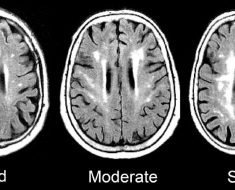
This was the conclusion of new research that tested the effects of a protein, called apolipoprotein A-I binding protein (AIBP), in mice with chemotherapy-induced pain.
Should the approach prove to be effective in humans with chemotherapy pain, it could offer an alternative to opioids, which carry the risk of addiction.
A report on the new study — led by the University of California (UC) San Diego in La Jolla — is now published in the journal Cell Reports.
It describes how one spinal injection of AIBP alleviated chemotherapy-induced pain in mice — without side effects — for 2 months.
Blocks underlying pain mechanism
AIBP binds to a cell surface protein called toll-like receptor 4 (TLR4) that plays a key role in recognizing infection and activating the immune system.
The researchers found that AIPB switched off the mice’s TLR4 receptors, effectively preventing and reversing inflammation and cell processes that deal with pain.

“What’s so special,” says study author Tony L. Yaksh, who is a professor in the Department of Anesthesiology at UC San Diego School of Medicine, “about our new approach, inhibiting the TLR4 receptor with AIBP, is that it actually modifies the pain processing systems themselves.”
He explains that most pain medications, including opioids, work by “dampening” perception of pain without actually switching off its source, which remains active.
In addition, opioids “impart a feeling of pleasure, which leads to their misuse and addiction,” he adds.
He and his colleagues found that AIBP actually blocks “the underlying mechanism that causes pain” — it does not just “mask the symptoms.”
The “misuse and addiction to opioids” that has followed their widespread use — including those prescribed for pain relief — is a “serious national crisis” in the United States.

Chemotherapy pain
Pain is a common side effect of cancer treatment that can significantly impair quality of life — for example, by reducing job opportunities and damaging mental health.
One of the side effects of chemotherapy is a persistent, painful condition that damages the nerves so that even the “lightest touch” can cause pain.
Cancer survivors may also find themselves living with persistent pain as a result of radiotherapy and surgery.
Prof. Yaksh says that around 39 percent of the 1.7 million people in the U.S. who are diagnosed with cancer every year experience pain as a result of the disease or its treatment.
He estimates that the national burden of morphine or its equivalent for this number of cancer patients — assuming that a typical patient takes around 100 milligrams per day for 12 months — amounts to some 24,000 kilograms per year.
Mechanism of inflammation, nerve damage
Scientists once thought that inflammation and nerve damage occurred separately.
However, in earlier work, Prof. Yaksh and colleagues found that sometimes, in a cellular process that involves TLR4, inflammation can result in persistent pain while exhibiting features of nerve damage.
In the new study, they carried out experiments in which they discovered that, by binding with TLR4, AIBP “selectively regulates” the removal of cholesterol from “lipid rafts.”
Lipid rafts are regions of cell membranes that have high concentrations of cholesterol and are important for helping cells communicate with each other and their surroundings.
Giving spinal injections of AIBP to mice with chemotherapy-induced pain effectively decreased the lipid rafts in the microglia cells of the animals’ central nervous system.
The injections also reduced other cellular events in the spinal cord, such as TLR4 activity, microglial activity, and inflammation.

Potential alternative to opiates
The researchers found that one AIBP spinal injection “completely reversed” chemotherapy-induced pain in the mice — without altering the animals’ “motor functions” — and that the effect lasted for 2 months.
They conclude that their findings reveal a mechanism through which AIBP can alter inflammation of nerve cells and suggest that it may have potential as a treatment for “pre-existing pain states.”
They are already working on alternative ways to administer AIBP systemically. However, they suggest that most people would probably choose to have an injection in their spine “every few months” rather than live with persistent pain.
An important implication is that AIBP could be developed as an alternative to high-dose morphine for those with “unremitting severe pain.” This would reduce use of opioids and the opportunity for misuse.
Prof. Yaksh points out that they are not suggesting that opiates should be dropped as a treatment for persistent pain; “that would be a tragedy,” he notes.
“But it would also be a greater tragedy if we didn’t support work to find a substitute for systemic opiates … if for no other reason [than] to reduce [their] presence in our society.”
Prof. Tony L. Yaksh
Source: Read Full Article





